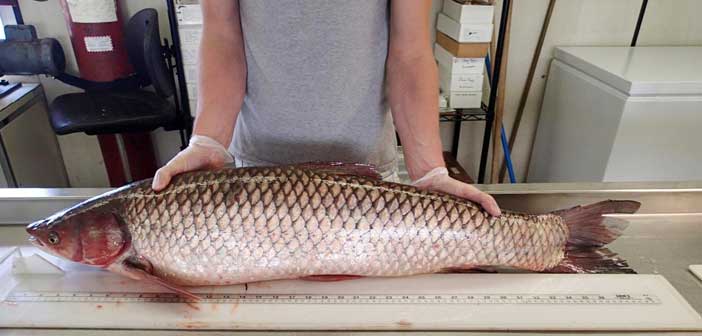WASHINGTON—The Asian Carp Regional Coordinating Committee (ACRCC) has announced a coordinated strategy to protect the Great Lakes from silver and bighead carp, building on previous US federal government administration efforts to prevent self-sustaining populations from becoming established in the Great Lakes.
The 2014 Asian carp control strategy framework introduces several new initiatives to the proactive effort to combat silver and bighead carp, including testing and deploying new physical and chemical control tools, constructing a new electric barrier in the Chicago Area waterway system and building a project to physically separate the Great Lakes and Mississippi River basins at Eagle Marsh near Fort Wayne, Indiana.
The Obama administration has invested more than $260 million dollars to protect the Great Lakes from Asian carp and created the ACRCC in 2009 in an unprecedented and effective effort to coordinate federal, state, provincial and local efforts to combat the invasive fish, a release states.
“The 2014 framework’s strategy is to perform activities that will directly prevent bighead and silver carp movement toward the Great Lakes. Each 2014 framework action addresses specific management actions critical to controlling the movement of Asian carp,” the release states. “The 2014 framework features the following new initiatives: expanding the harvesting of silver and bighead carp downstream of the electric barriers; constructing a new electric barrier; testing and evaluating the water gun and other potential control technologies at Brandon Road lock and dam approach site to determine whether fish can be kept out of locks; field testing of a fish toxicant (microparticle); supporting stakeholder consensus building process for long-term solutions to address aquatic nuisance species transfer between the Great Lakes and Mississippi River basin; constructing a permanent separation berm at Eagle Marsh berm to stop Asian carp threatening Lake Erie; identifying options for blocking carp pathways at Killbuck Creek and the Ohio-Erie Canal in Ohio; developing a hand-held real-time deoxyribonucleic acid (DNA) detection kit; furthering work on the future of water transport in the CAWS, and extensive monitoring under the 2014 Monitoring and Response plan for the CAWS and the Illinois River, as needed to monitor the leading edge of the Asian carp.
“This strategy continues our aggressive effort to strengthen our tools to keep Asian carp out of the Great Lakes while we work toward a long term solution,” said John Goss, Asian carp director at the White House Council on Environmental Quality. “The 2014 Framework will focus new efforts to control bighead and silver carp downstream of electrical barriers. These new efforts will be moving from research to field trials in the Brandon Road lock and dam area.”
“With the release of the draft Great Lakes Restoration initiative action plan and this framework, the administration is doubling down on efforts to keep these fish from invading our magnificent Great Lakes and undermining the region’s economy,” said Cameron Davis, senior advisor to the Administrator, US Environmental Protection Agency and vice chair of the ACRCC. On May 30, the Obama administration released a draft GLRI Action Plan that signals continued support for beating back invasive species, including silver and bighead carp.”
“We are working with our partners in the field to test water guns, food attractants, and other new Asian carp control tools and methods,” said Leon Carl, USGS Midwest region director. “Even though the Asian carp framework is focused on bighead and silver carp, we’ve also examining how best to apply our extensive knowledge and technologies to develop strategies for controlling grass carp, another Asian carp species threatening the Great Lakes.”
“This 2014 framework demonstrates our collaborative commitment towards the inter-agency Asian carp fight in order to protect the invaluable resources that are our Great Lakes,” said Jo-Ellen Darcy, assistant secretary of the Army for Civil Works. “The Army Corps of Engineers continues to work tirelessly to prevent the establishment of Asian carp in the Great Lakes basin. We are building a new electric barrier that incorporates over a decade of research, intensively monitoring the waterways to track the fish, discussing control alternatives presented in GLMRIS and providing technical assistance to our partners.”





